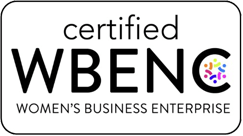In 2022, life science digital marketing is all about customer experience. Customer satisfaction is the first step towards improved brand loyalty and customer engagement. It’s possible to have a great product or service, but most people will stop buying it if they are unsatisfied with their experience.
“What can your company do to meet the needs of your client base?”
That should be the question at the core of your marketing strategy. If you put your customers first when you build your content and develop your website, you’ll see the results in conversion rates.
Studies show that a happy customer is up to 4x more likely to return to a business. Why? Because they feel valued, satisfied, and appreciated. When businesses create experiences that are tailored to their individual needs, they are more likely to retain the customer than a brand focused on quantity over quality.
Let’s get into how customer experience has made it to the top of the marketing strategy chain and what you can do to shift your strategy towards CX.
The Road To Customer Experience Marketing – A Brief History
Keyword stuffing, multiple popups that block access to the page, ad-stuffed pages, (virtually all) YouTube ads, clickbait titles, most old-school link building, all of these are strategies that have built a bad reputation for the Internet. People no longer trust the information they find online, engagement has plummeted, and numerous products were forever forgotten in online carts never to be checked out.
So the digital giants (Google, YouTube, Facebook, Twitter, etc.) stepped in to clean the mess they had generated. Then came years of radical change in the digital world via hardcore algorithm updates that threatened to take away search engine visibility for websites that would not rise up to new standards… and the Internet is a better place because of them. Websites now strive to be mobile-friendly because of the Mobile-first indexing update, significantly faster because of the page experience update, and it is becoming increasingly cleaner with the latest Google Core Updates.
What do all of these updates have in common? Their main marketing goal is to improve customer experience on websites.
So sites that work on providing their users with a better experience are promoted, while those that remain set in their spammy ways are pushed to page 10 in Google Search, otherwise known as Digital Limbo.
While such measures were clearly necessary to improve site quality, they have also paved the way for customer-experience-centered marketing. Turns out that people are more inclined to spend time and money on platforms they enjoy, where they can get products and/or information they trust, and where they feel like they are more than just numbers. Genuinely caring for customers, readers, and users and prioritizing their needs pays back plentifully!
Customers Demand a Better Experience
In 2022, customers have found their voice and they are not afraid to use it. They not only want to have a good experience on digital platforms, but they expect it. As many as 64% of consumers consider customer experience more important than price as they decide to make a purchase with a brand. And the bigger the company, the bigger the expectations they have from it.
Customers have felt this way a while before 2020, but when the COVID-19 pandemic drove the entire world online, customer experience became even more important. It became the pillar of customer interaction. Brands that went the extra mile to provide their customers with a positive experience and show them they actually cared, won not only customers, but brand advocates. According to statistics, 77% of customers recommend a brand to a friend after only one positive experience, so it’s time to up the game.
The past two years have been particularly intense for the medical, science, and biotech community because people expected extra care and extra attention from them. But most of all, they demanded accurate information and trustworthy products.
The Pillars Of Customer Experience Marketing
Developing a marketing strategy focused on customer experience means putting the customer first. The priority becomes providing the user with the best possible journey. Here are the main things to consider when crafting this strategy:
- Content Development Focused on User Needs
- Page Experience Optimization
- Customer Journey Optimization
- EAT Optimization
- White-Hat Tactics Only
- Operational Excellence
Content Development Focused On User Needs
SEO used to be about including targeted keywords in your content (sometimes heavily) to show search engines what your content was about, in the hopes that this would bring your page higher in their search results. This was SEO in the dark ages.
In 2022, SEO is still very much about keywords, but how you use them has changed tremendously. Keyword research done for the topic you want to write about will provide a set of keywords you could target, but, most importantly, it will help you identify the user needs associated with the topic. Break them up into intent categories – informational, navigational, commercial, and transactional keywords.
Your next step is to analyze each set of keywords to identify the user needs associated with them. Long-tail keywords and the “People also ask” section can provide detailed information about what people are looking for in relation to your main topic. Next, you can do competitor analysis to see what Google considers to be the most relevant content for your targeted keywords, as well as what your competitors are writing.

Based on all of this information, you can craft your content so that it provides the most relevant information for each user’s needs. Build topic clusters and assign each one a separate page for the best results. Make sure to use internal linking to connect these pages in a way that helps users get a broad view of the topic.
As for using the actual keywords in the content, that’s still important in some parts of the page like the title and your first paragraph, but there is no need to overdo it. Use natural language in the appropriate tone and focus on providing relevant information. Your keywords, or the unique words they are made of, will definitely come up.
Page Experience Optimization
Each of the pages on your site has to provide users with a cohesive experience, from top nav to header, to content, and all the way down to the footer. All of your pages together have to tell your brand’s story using messaging that your customer base can relate to. No pressure, we know.
Page experience optimization is a complex part of the customer experience marketing strategy because it concerns the technical backbone of your website and every single element on the page. Think of it this way – it won’t matter if your content is spectacular if users can’t click the button to request a demo or purchase the product.
To stay compliant with Google guidelines, you also have to pay special attention to how fast your site is. The first step is to analyze your core web vitals scores and then work on page speed optimization. This concerns how your website is built, what tools or plugins you use on the site, your server configuration, as well as the elements you use on your pages. Image optimization is a major part of this task, but it is only the tip of the iceberg when it comes to page speed optimization. Keep in mind that this is an ongoing process and that you will have to check your core web vitals on a regular basis.
Another important part of page experience optimization is making sure that your users have the same positive experience on all devices. Even though Google’s mobile-first indexing update was back in 2020, there are still websites that are not entirely responsive. Even for the responsive ones, mobile experience should be considered separately and optimized accordingly. A good place to start is Google’s mobile-friendly test.
Once your site is mobile-friendly, you also need to make it accessible to people with all types of disabilities: auditory, cognitive, neurological, speech, visual, or physical. This entails following a set of guidelines concerning contrast, font sizes, and several other details that will help people who use additional tools to access your site to have a good experience.
Entire Customer Journey Optimization
As mentioned above, each page on your site must take your customers on a journey. The destination depends on your company goals – it can be a demo request, a product purchase, a subscription, etc. Your goal is to drive users to that point by making them see how that action answers their needs.
In some cases, this journey requires a single page, in other cases, it requires them to navigate through several pages. In both cases, it’s up to you to show them the way, to highlight the focus points along their journey. To ensure that this journey is as smooth as possible, you will need to make sure all your tracking and analytics is set up.

Heatmaps can be particularly useful to see the hot and cold areas on your pages. Based on this data, you can adjust your page to remove any bottlenecks that are keeping your users from going down their path. You can see what parts of your pages users are actually interacting with and what parts are simply ignored. Your next step is to do some A/B testing. For each improvement point, you may have several ideas and the best way to know which are the most efficient is to test them on your users themselves.
EAT Optimization
Expertise, Authoritativeness, and Trustworthiness, or EAT in short, is now one of the central parts of Google’s algorithm. It all started way back in 2014 when Google included EAT as part of their Search Quality Guidelines, but it has gotten increasingly important over the years. In 2018, EAT was a major part of a core update that spanned notable shifts in organic traffic, particularly for YMYL (Your Money Your Life) sites. Since then, it has remained a major part of most of the following Google core updates.
Websites from the medical, science, and biotech fields were particularly impacted by EAT. Many of them lost huge amounts of organic traffic because Google deemed their content untrustworthy, while others that provided trustworthy and authoritative information stepped up the ranking ladder. Since then, major developments were seen in this industry.
Even now, in 2022, the medical and science fields remain the biggest focus of EAT. One of the main points of EAT optimization is getting truly authoritative and trustworthy sources for your content and letting your users (and Google, of course) know about it. Author bios are extremely important because your users will want to know if your life science article was written by a scientist or a copywriter. If the article was reviewed by a doctor, then add that to the bio as it will make a great difference to everybody (and even Google).
Go out of your way to show users that your sources are real people they can trust. Include a name that they can google, include social media profiles, links to website bios, and everything you have available. Of course, author bios are just the final step. Getting your content from authoritative sources is the most important.
Digital Public Relations also play a huge role in EAT optimization. This includes link building, brand mentions, and leveraging your brand as an authority in your field. Your social media strategy also has to be in line with your digital PR campaigns. These two strategies have a synergic effect on each other, so craft them cohesively for the best results.
White-Hat Tactics Only
While the ultimate goal is to guide your users down the journey you want them to take, be subtle in your approach and put their experience first. They will actually be grateful for it. Don’t use pop ups that block access to the page, don’t use multiple popups, don’t overdo it with mobile ads, don’t include too many links, buttons, or any other forms that might overwhelm the users.
Using white hat tactics in your marketing efforts will not only steer your clear of penalties, but it will also improve your site’s reputation with your user base. Don’t buy links (don’t sell them either) and target relevant keywords in your ads. Don’t promise your users what you can’t offer them, not in ads, not in titles, not in your content.
Operational Excellence
When it comes to customer experience in marketing, operational excellence is important as well. If you’re not running your campaigns properly, you’re wasting money and resources. You need to track results, measure ROI, and optimize your spend. Creating a strategy is only half the battle though. You also need to implement it properly. There’s no point in putting up billboards if nobody sees them!
Companies that make a conscious effort to improve their operational processes are more likely to succeed in the long term. This includes everything from hiring top-notch staff to developing innovative technology. It also encompasses things like efficient ordering systems and streamlined supply chains.
The most successful life science companies are those that invest in their operations from the get-go. They learn from mistakes quickly, implement the most successful practices and continuously improve operations. Some even go so far as to hire dedicated operations managers.
With this information in mind, it’s time to focus on customer experience and make your marketing strategy CX-focused. Spend the time to identify those user needs and what you can do to respond to them, build your content around that, stay spam-free, name your authoritative sources, and make your site fast and mobile-responsive. You will reap the results soon enough!
If you’re engaged in the life science industry, chances are you’re interested in digital marketing. If you’re not, there’s still a good chance that your company may benefit from spending some time on this aspect of business. At the very least, you need to be aware of what digital marketing is and how it works. In addition, you should know which approaches are most likely to be useful for your company.
We are dedicated to providing you with a variety of services that ensure your company’s success. We assist in the development of life science marketing strategies and campaigns, as well as the implementation and execution of your plans. We also provide strategic advice and counsel on a wide range of topics, including digital marketing experience, product launch consulting, digital transformation consulting, and market development.
The goal of our work is to help you reach your full potential as an organization. By working with us, you can achieve your goals and achieve success in life science marketing. Contact us today to learn more about how we can help you.
You might also enjoy:




